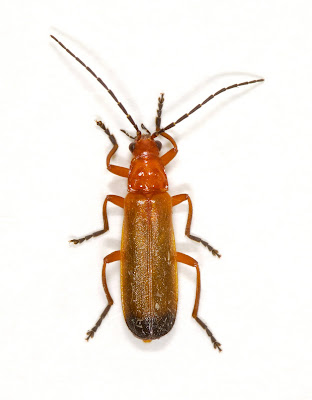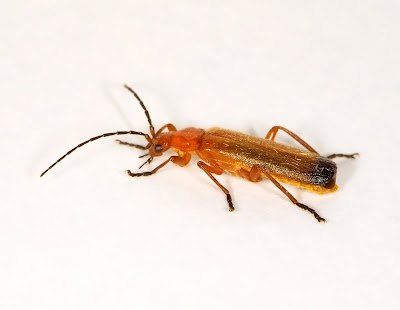Although the morning had been rainy, by the time we picked everyone up and assembled at the back of Bonhill, it had fairly brightened up.
On our ascent of Pappert Hill we crossed an area of mixed meadow and boggy marsh (flanked by the Pappert Well Community Woodlands) in which flourished wildflowers of every colour: golden patches of Bog Asphodel, lemony-yellow Tormentil, white Grass of Parnassus and Corn Spurrey mingled with magenta Redshanks and pale pink Common Spotted Orchids.
 |
| Grass of Parnassus (Parnassia palustris) |
 |
| Grass of Parnassus (Parnassia palustris) |
Delicate transparent veins (nectar guides) groove the white petals surrounding a set of 5 cream-coloured fertile stamens (whose anthers produce pollen) and a set of 5 green infertile stamens (known as staminodes) which bear yellow spherical glands.
These yellow glands are fake nectaries, making the flower more visually appealing to pollinating insects, but don't actually produce any nectar. Although they are somewhat misled, the insects don't lose out entirely: nectar is instead produced from two inconspicuous glands at the base of the staminodes.
 |
| Print from Flora von Deutschland Österreich und der Schweiz (1885), courtesy of Biolib.de |
 |
| Redshank (Persicaria maculosa) |
 |
| Red Bartsia (Odontites verna) |
 |
| Corn Spurrey (Spergula arvensis) |
Underneath shadowy pines I found a Cortinarius species mushroom: the cap was sticky brown and resembled a toffee-apple.
 |
| Cortinarius sp. mushroom |
Leaving the woods behind, we climbed over a barbed wire fence, and came upon a cairn and the Hill of Standing Stones, where we heard the distant cronking of Ravens over Knockshannoch moor.
 |
| Barred Straw (Eulithis pyraliata) |
Taking the gritty road which cuts between forestry plantation and the steep Murroch burn (on the return to Bonhill), we encountered a mating pair of gleeming Green Tiger Beetles (Cicindela campestris) scuttling along the path! This is the first time I have seen them in West Dunbartonshire.
Further along, we disturbed a female Sparrowhawk (Accipiter nisus) which had been perched in a pine to the right of the track. She flew up as we passed, weaving agilely through the pines and disappeared from view.























